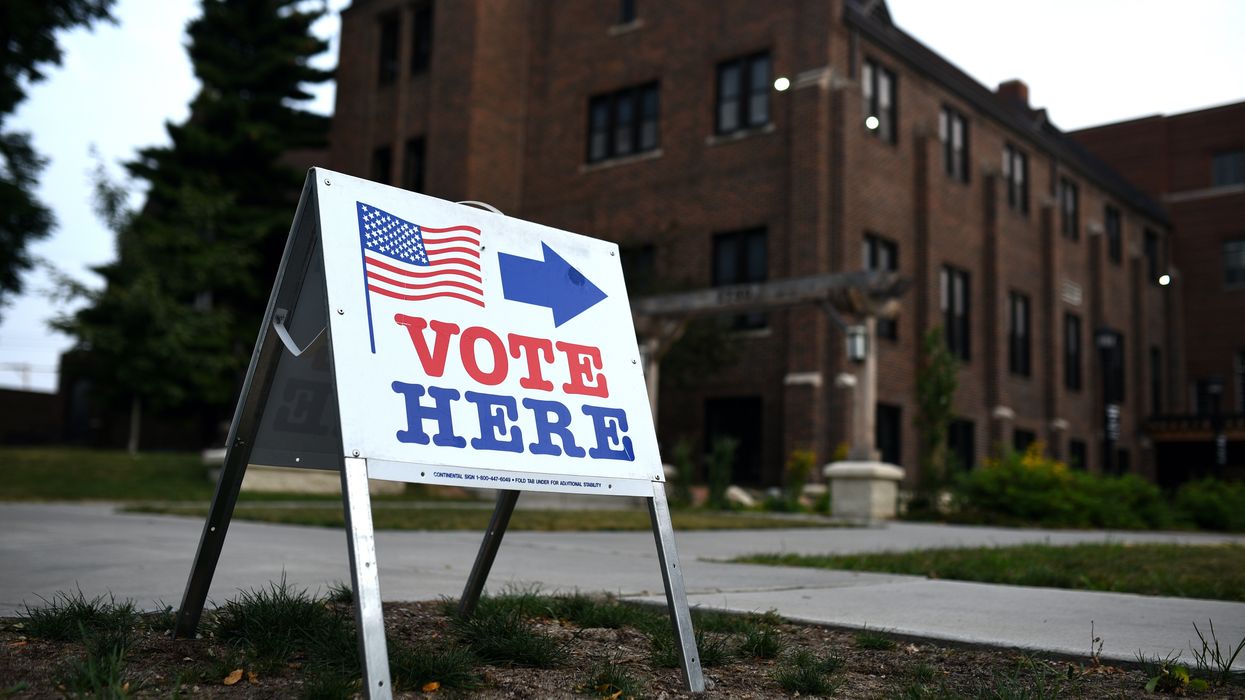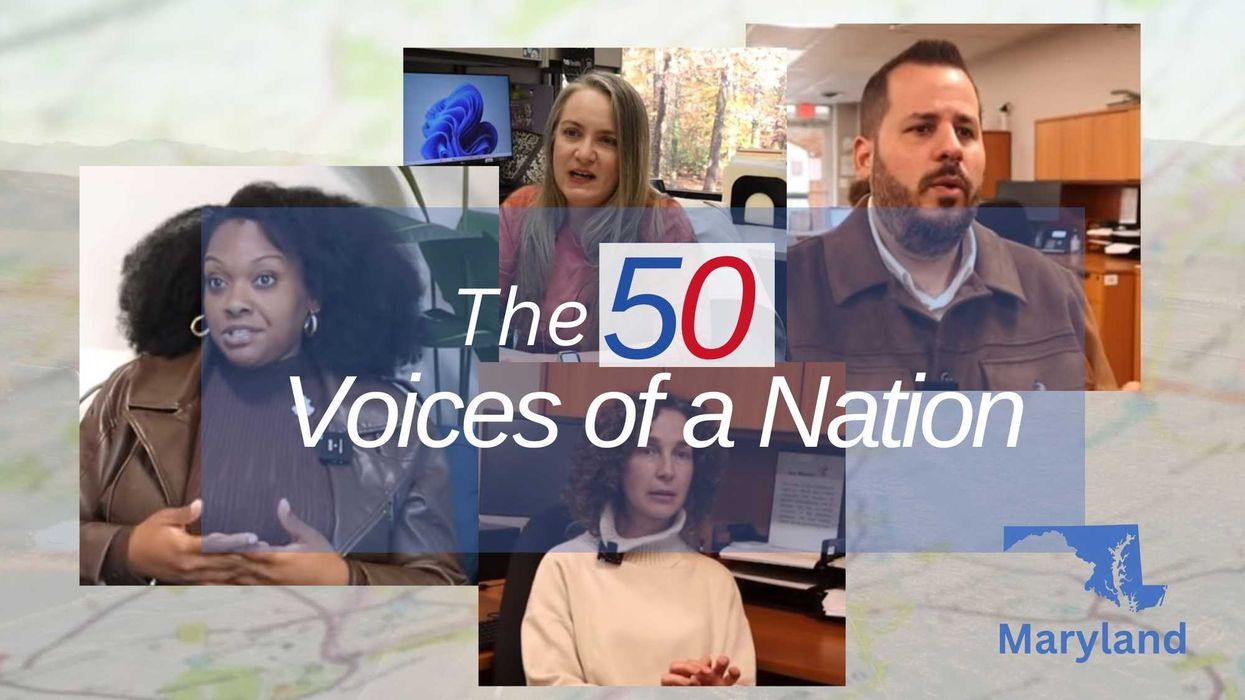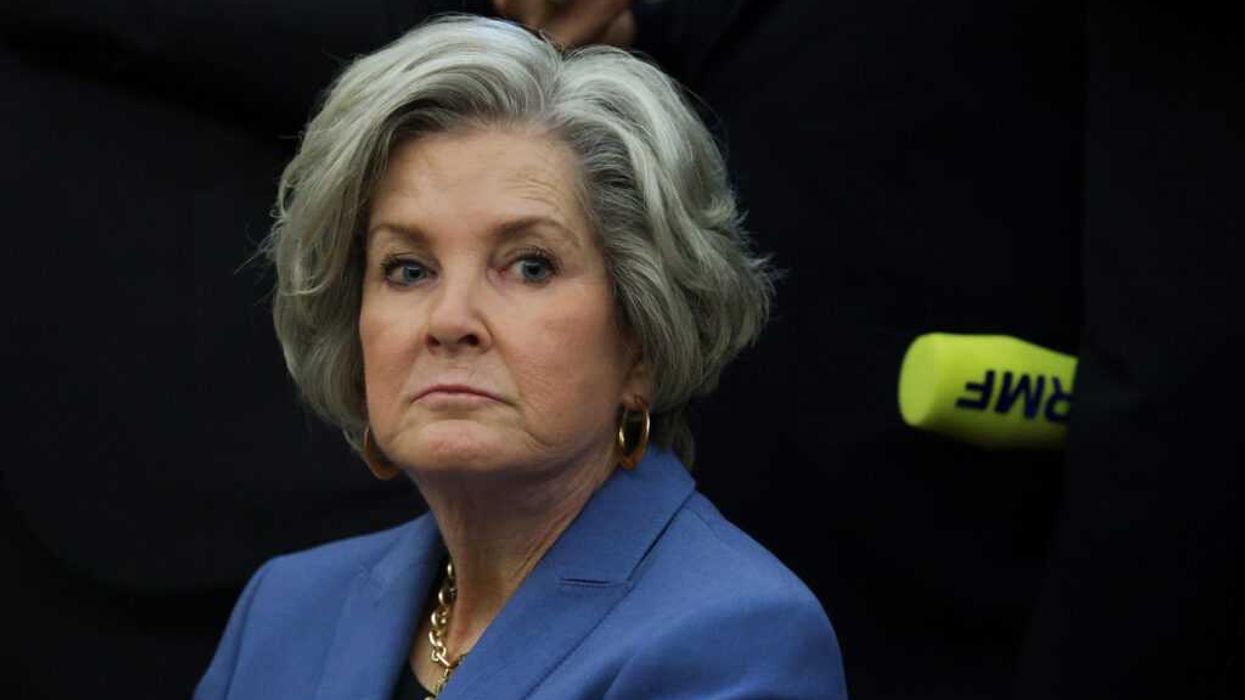Former Congressman Tip O’Neill famously said “all politics is local.”
The same applies to election administration in the U.S., which is markedly decentralized. On Election Day, county- and city-level poll workers are the people who make sure voters can smoothly cast their ballots for measures and candidates vying for offices spanning all levels of government.
But this fundamental democratic function isn’t free, and election administrators often say they have a lot to do on limited budgets, research shows. State and local governments — not the federal government — are usually responsible for election administration costs.
Some of the biggest ongoing costs are related to statewide voter registration rolls, which can cost millions of dollars a year to build and maintain, according to to a 2022 report by Massachusetts Institute of Technology political scientist Charles Stewart III.
Costs associated with individual elections include staffing, supplies for polling places and postage for mail-in ballots. Local election agencies have to pay for return postage in 19 states, plus Washington, D.C., but the U.S. Postal Service will typically deliver any ballot that lacks enough postage, billing the appropriate election agency later, according to the nonpartisan National Conference of State Legislatures.
Longer-term costs include upgrading equipment such as scanners that process paper ballots.
Nearly 80% of voters used paper-and-scanner technology during the 2020 election. Most of the remaining voters used direct-recording electronic machines. With those devices, voters use touch screens or push buttons to record their votes digitally, which may or may not include a paper trail.
Nationally, equipment costs would run $100 million to $300 million yearly if each scanner were replaced at the end of its useful life, around ten years, according to the MIT report. As of 2022, the voting equipment used in 24 states was over a decade old, according to a report from the Brennan Center for Justice at New York University.
“Election officials are used to ‘making do’ with what they have,” Stewart writes. “They often express pride in pulling off the complicated logistical maneuvers necessary to conduct elections on a shoestring budget.”
Revenue from sales and property taxes are one major source of funding for elections, according to the 2022 MIT report. While federal grants have sporadically been available since 2002, “there is no ongoing federal mechanism for funding the general expenses of administering elections,” according to a September 2023 report from the Congressional Research Service.
The question of who pays to run elections gained national news attention during the early days of the COVID-19 pandemic. There were, for example, sudden additional costs related to widespread mail-in voting and personal protective equipment for election workers and volunteers.
And there’s not solely government money involved.
For the 2020 election cycle, “private individuals funded grant programs for state and local election administration that were particularly notable in their scale and sources,” according to the CRS report.
Philanthropist Priscilla Chan and her husband Mark Zuckerberg, founder and chief executive of Meta, were the leading donors, committing up to $419.5 million for election administration, including for personal protective equipment.
That commitment was roughly 20% of one estimate of the typical cost of administering elections across the U.S. and about half the $825 million Congress appropriated for state and local election administration in 2020. (That federal appropriation was atypically large due to the pandemic-era challenges — by comparison, Congress appropriated nothing for state and local elections during the 2016 cycle, according to the CRS report.)
A raft of misinformation about the Chan-Zuckerberg funding followed President Joe Biden’s November 2020 win over former President Donald Trump. At the same time, Republican state legislators and conservative groups pushed to remove private dollars from election administration.
There are now 28 states that limit, regulate or prohibit private or charitable funding for elections, according to the NCSL. In 2020, the electoral votes from 22 of those states went to Trump while five went to Biden. Nebraska, which allocates its electoral votes differently from nearly every other state and often splits its electoral votes, sent one to Biden and four to Trump in 2020.
All legislation related to private funding of elections has been passed since 2020, according to the NCSL.
With the new legislation and a variety of election financing systems across the country, it can be confusing to know where to begin to help audiences understand how their elections are funded. These research-based tips will give you a solid base for reporting on election administration funding in your coverage area.
Get to know state rules on how localities can finance elections
Start with this list, compiled by the NCSL, of states that have passed laws about private funding of elections. Note whether your state prohibits all private funding, or limits such funding in some cases.
Alabama, for example, prohibits state and local election officials from soliciting or accepting “any donation in the form of money, grants, property, or personal services from an individual or a nongovernmental entity for the purpose of funding election-related expenses or voter education, voter outreach, or voter registration programs.”
But Alabama election officials can accept a donation of physical space for voting provided by private entities, such as a brick-and-mortar business donating its store for use as a polling place. If there is a state public health emergency, election officials in that state can accept “the donation of items for the preservation or protection of the public health.”
In South Carolina, by contrast, state and county election agencies cannot accept “gifts, donations, or funding from private individuals, corporations, partnerships, trusts, or any third party not provided through ordinary state or county appropriations,” without exceptions. And in Texas, local election officials cannot accept financial contributions over $1,000 without written notice from the secretary of state, who must first obtain unanimous approval from key state leaders, including the governor.
Ask election officials if they have enough funding. If not, how much do they need and for what?
Legal scholars have described adequate election funding as a fundamental pillar of the right to vote. “Unlike most other rights, the right to vote relies on governments to build, fund, and administer elections systems,” write law professors Joshua Sellers and Justin Weinstein-Tull in a 2021 New York University Law Review article. “This obligation is not ancillary to the right to vote; it is foundational to it.”
Ask local election officials if they have enough funding for 2024. If not, how much do they think they need and what specific outcomes would additional funding help achieve? What tradeoffs would there be — would more funding for elections mean less funding for other needs?
While election administrators will likely say they would gladly take more funding, there is scant research that provides points of comparison to assess outcomes of increased funding — for example, whether election agencies serving similar constituencies do their jobs differently depending on funding levels.
Don’t assume localities with high tax revenues spend more on election administration
Recent research has focused on parsing the local costs of elections. In a 2021 Vanderbilt Law Review article, Sellers and law professor Roger Michalski seek to correct what they call the “shamefully inadequate amount of information about how much our elections cost.”
Sellers and Michalski use a “novel and painstakingly hand-coded dataset,” on election costs at the local and state levels from 2010 to 2017 across four states that make up nearly one-third of the national population: California, Arizona, Texas and Florida. Part of the challenge in analyzing election spending data across and within states is that agencies record their election-related expenses differently. The authors found that some agencies provide detailed expenditures down to the cost of postage, while others more broadly record costs.
They do not find connections between election funding and demographic factors such as race, poverty and educational attainment.
“Election spending in majority-minority communities seems largely indistinguishable from spending in predominantly white communities,” Sellers and Michalski write. “In short, basic assumptions one might have about resource allocation are brought into question.”
Sellers and Michalski also estimate that election spending in the four states is typically in the range of $4.50 to $8.50 per capita. This is in line with other research, including a 2018 data collection project on elections held in more than half of states from 2009 to 2016, led by researchers at the University of North Carolina at Chapel Hill. That research estimates an average U.S. cost per voter of $8 per election, but substantial variation across states, with costs as high as $15 per voter in Florida and as low as $2 per voter in Michigan.
Sellers and Michalski also find wide variation in election spending. For example, in California many cities “spend less than a dollar per person per year on election expenditures, while others spend many multiples more,” they write. Those findings hold for the other states in the study, and, generally, wealthier cities do not necessarily spend more per capita to administer elections than cities with lower tax revenues.
Spending tends to be higher in areas where governments overlap: “In many places, municipalities and counties work in concert to organize, run, and fund elections,” Sellers and Michalski write.
Election administration spending can vary even within counties. Someone living in a large city that is part of a county with sprawling suburbs might take part in elections funded at both the city and county levels, while a suburban voter might only have elections funded by the county.
Explain why election administration funding matters
One big reason funding matters: Election officials need to be able to purchase technology and ballot designs that accurately records voters’ choices.
For example, the 2000 presidential election between George W. Bush and Al Gore was notably affected by punch card ballots, with so-called “ hanging chads ” making voter intentions unclear and directly leading to the 2002 Help America Vote Act, which provided federal funding to upgrade local voting systems.
Scholars who study elections use something called the residual vote rate to measure the relative ability of election agencies to perform their fundamental task of recording voter intentions. As Stewart writes in a 2018 MIT Election Lab blog post, “the number of residual votes is usually calculated by taking the number of people who turned out and subtracting the number of votes cast for candidates.”
In other words, a residual vote is when a ballot is cast that includes votes for some but not all races on the ballot. The authors of a 2020 paper in the Public Administration Review explore residual vote rates in North Carolina by dividing the number of ballots cast in presidential election years from 1996 to 2012 by the number of votes for president.
Presidential ballots often also include races for local or state offices, and ballot measures. For example, a residual vote would be counted when a ballot includes a vote for a senate race and a ballot measure, but is missing a vote for president.
“Though some proportion of residual votes might be the choice of the voter (some people choose not to vote for particular offices), scholarship revealed that residual votes were systematically related to the type of voting equipment and ballot design,” the authors write.
Sufficient funding generally allows people running and working for organizations to develop expertise and “provide for better technology and assistance,” the authors write, citing past research. The authors further explain in the paper that “the residual vote rate is an important managerial outcome of election administration.”
Although the authors analyze only one state, they note that, over time, they are able to explore residual voting in the same local administration organizations, which differ in their ability to run elections but have the same funding mechanisms.
“We find that both managerial capacity and better technology significantly reduce the residual vote rate as would be predicted by theory and literature,” the authors conclude.
Know that the health of the U.S. economy may affect election administration spending
Research has found that how the broader economy is doing can affect spending on election administration.
A 2020 paper in American Politics Research examines county-level spending on elections from 2005 to 2016 in Georgia, New Jersey, North Carolina and Ohio. This timeframe overlapped with the Great Recession, which began in late 2007 and ended in mid-2009. The authors note they chose those states based primarily on the availability of detailed financial data for county election offices.
During and after the recession, election-related spending in these states fell sharply, and stayed lower than before the recession, even as the economy slowly began to recover.
“Unfortunately, just because democracy may need significant funds to conduct an election, it does not always mean that election administrators have sufficient resources,” the authors conclude.
This article was originally published in The Journalist’s Resource.


















